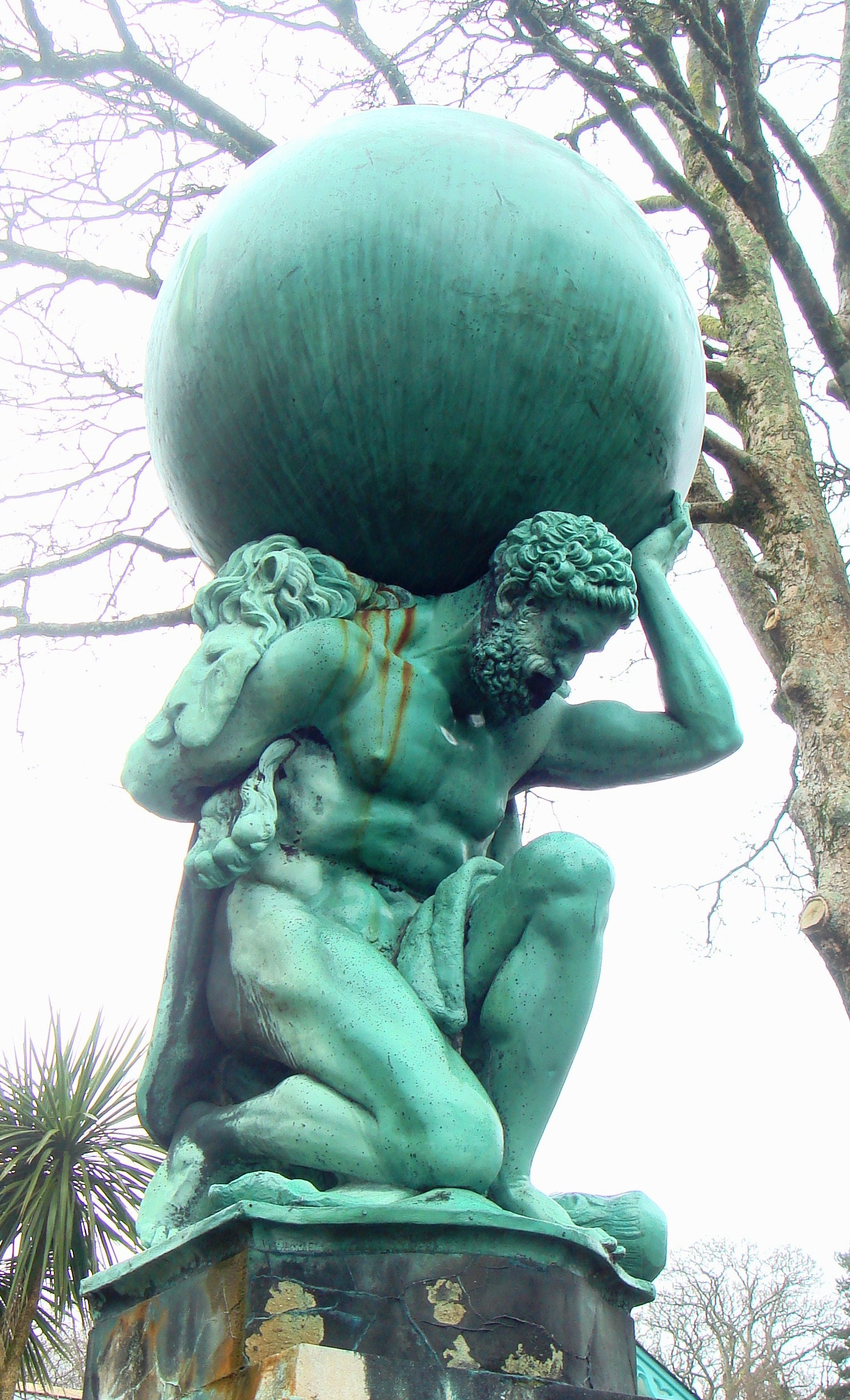


Notice: This is the official website of the All Empires History Community (Reg. 10 Feb 2002)
Zarathushtra brought on agricultural revolution |
Post Reply 
|
| Author | |||
mojobadshah 
Consul 
Joined: 20-Apr-2007 Location: United States Online Status: Offline Posts: 382 |
 Quote Quote  Reply Reply
 Topic: Zarathushtra brought on agricultural revolution Topic: Zarathushtra brought on agricultural revolutionPosted: 14-Aug-2013 at 15:05 |
||
|
Has anyone read "When Zarathustra Spoke" by Mary Settegast. She puts up what I think is a rational enough argument supporting the ancient Greek dates placing Zarathushtra 6000 BCE. Her argument definitely makes you double think the 6000 BCE dating. She says that Zoroastrian ideology can be found in ceramics dating back to the agricultural revolution, and according to her it was Zoroaster's message which encouraged the settled life that allowed the agricultural revolution to spread from Iran into Europe. She says the wheeled cross represents Ahura Mazda's perfect creation and whirl patterns represent the beginning of time. Can anyone think of any other patterns in pottery that represent Zoroastrian concepts?
|
|||
 |
|||
Centrix Vigilis 
Emperor 

Joined: 18-Aug-2006 Location: The Llano Online Status: Offline Posts: 7392 |
 Quote Quote  Reply Reply
 Posted: 14-Aug-2013 at 15:31 Posted: 14-Aug-2013 at 15:31 |
||
|
what nexus is there to facilitate that as regards the presence of it affecting agriculture production in Europe especially in the west....eg. ancient Iberia and or Ireland. Ceide fields are the oldest field systems known in the world. Iow. what ancient ship born techs did the followers of the Prophet of Light know and practice in 6000 BC to allow an Atlantic journey thru the Medd. Or conversely where is the nexus and evidence that shows their migration to an Island over three thousand miles away across a very inhospitable western euro continent and then still sail to Ireland. |
|||
|
"Absence of evidence is not evidence of absence"
S. T. Friedman Pilger's law: 'If it's been officially denied, then it's probably true' |
|||
 |
|||
mojobadshah 
Consul 
Joined: 20-Apr-2007 Location: United States Online Status: Offline Posts: 382 |
 Quote Quote  Reply Reply
 Posted: 14-Aug-2013 at 17:14 Posted: 14-Aug-2013 at 17:14 |
||
It does appear to be well established that agriculture was brought to Europe from the Near East. I recall haplogroup J was one of the daughters of the mitrochondrial Eve and European clan mother, that introduced agriculture to Europe. She says Zarathushtra's missionaries settled in Iraq, and as far west as Greece.
|
|||
 |
|||
TITAN_ 
Baron 

Joined: 21-Jun-2012 Online Status: Offline Posts: 480 |
 Quote Quote  Reply Reply
 Posted: 14-Aug-2013 at 19:06 Posted: 14-Aug-2013 at 19:06 |
||
|
Zarathushtra is a mythological figure and it is not academically acceptable to date him back to 6000 BC. 6000 BC is prehistory, an era when no one's life was recorded.
Zoroaster's language was old Avestan (1500-2000 BC) and dates proposed in scholarly literature diverge widely, between the 18th and the 6th centuries BC. (1700-500 BC). Only Plutarch proposed dates prior to 6000 BC.... |
|||
|
αἰὲν ἀριστεύειν
Een aristevin “Ever to Excel“ From Homer's Iliad (8th century BC). Motto of the University of St Andrews (founded 1410), the Edinburgh Academy (founded 1824) and others. |
|||
 |
|||
mojobadshah 
Consul 
Joined: 20-Apr-2007 Location: United States Online Status: Offline Posts: 382 |
 Quote Quote  Reply Reply
 Posted: 14-Aug-2013 at 19:31 Posted: 14-Aug-2013 at 19:31 |
||
|
Zarathushtra probably did compose at least parts of the Gathas. But, whether he existed or not is not the point. The point is that the Gathic literature was recorded at some point in the history. There's more of a likelihood that he lived than there is Homer lived. Jesus was a mythological figure. I totally agree with your rundown of the scholarly placement of Zarathushtra, but Mary Settegast's work was not a crackpot thesis. It was the thesis of her predecessors that there had to have been an ideology that encouraged the agricultural revolution. Settegast is proposing that it was Zoroastrian ideology... which did in fact promote the settled life. A lot of what the ancient Greeks have claimed about Zarathushtra had been written off, but later scholars have found them to be right. For example, the ancient Greeks claimed the magi practiced metempsychosis or reincarnation. This was written off until it was discovered that there was a regional form of Zoroastrianism that promoted reincarnation. I'm not saying Settegast is right, but its worth looking into. What would make her case stronger is if more of the ideology in ceramics from the agricultural revolution were understood, but little is at this time. That's why I'm curious to know if anyone knows of any other interesting ideological patterns from the agricultural revolution.
|
|||
 |
|||
Centrix Vigilis 
Emperor 

Joined: 18-Aug-2006 Location: The Llano Online Status: Offline Posts: 7392 |
 Quote Quote  Reply Reply
 Posted: 15-Aug-2013 at 00:58 Posted: 15-Aug-2013 at 00:58 |
||
''It does appear to be well established that agriculture was brought to Europe from the Near East.'' That's not an issue and I would in general concur. The issue is.. given your source... is that zoroastrianism is responsible for an ideology or acceptance of a replacement of the hunter gatherer culture into an agro one. As far it being as far west as Greece is immaterial. There is no evidence or a identifiable nexus through any number of methods to include the archaeo or anthro record and even linguistic in part.. of a zoroastrianism influences that I am aware of... that answers the earlier point reference the ancient Iberian peninsular and Ireland. Where the archaeological record shows an agro influence 3500 years prior to the alleged birth of Zoroaster. You wrote: ''which encouraged the settled life that allowed the agricultural revolution to spread from Iran into Europe"... Define Europe. If as far as Greece perhaps an influence that might not have been earlier id. Or more probably a misrepresentation. Farther west? Smacks of Persian mythology afficnadoes attempting revisionism to me. As the Sumerians were practicing it and a labor force supplementation of it; according to mainstream... as far back as 55ooBC... in the form of large scale production... mono crop production and irrigation. Edited by Centrix Vigilis - 15-Aug-2013 at 01:05 |
|||
|
"Absence of evidence is not evidence of absence"
S. T. Friedman Pilger's law: 'If it's been officially denied, then it's probably true' |
|||
 |
|||
mojobadshah 
Consul 
Joined: 20-Apr-2007 Location: United States Online Status: Offline Posts: 382 |
 Quote Quote  Reply Reply
 Posted: 15-Aug-2013 at 12:31 Posted: 15-Aug-2013 at 12:31 |
||
I'm not 100% sure what your question is or what your getting at, but she mentions agriculture spreading from Iran to Southern Europe. She says the agricultural revolution began in the latter 7th millenium. By this time patterns become more complicated like they could be ideological. She says Halaf culture was a product of this Zoroastrian mission, but Halaf culture was replaced by Ubaid the pre-Sumerians.
|
|||
 |
|||
Centrix Vigilis 
Emperor 

Joined: 18-Aug-2006 Location: The Llano Online Status: Offline Posts: 7392 |
 Quote Quote  Reply Reply
 Posted: 15-Aug-2013 at 13:44 Posted: 15-Aug-2013 at 13:44 |
||
|
I am not attempting to be argumentative towards you with no intent. And I value your interest and bringing the question. Ntl even a correlation with the Halaf by your source remains suspect.
Famed for their pottery tis true and while distributed in the locale region equally so. Ntl this remains an insufficient example of the claim that zoroastrian influences were directly responsible for the spreading of the ideology of adopting an agro society. into the west from the historically identified region known as the fertile crescent. |
|||
|
"Absence of evidence is not evidence of absence"
S. T. Friedman Pilger's law: 'If it's been officially denied, then it's probably true' |
|||
 |
|||
mojobadshah 
Consul 
Joined: 20-Apr-2007 Location: United States Online Status: Offline Posts: 382 |
 Quote Quote  Reply Reply
 Posted: 15-Aug-2013 at 14:00 Posted: 15-Aug-2013 at 14:00 |
||
Sorry it was Hafian, not Halaf. These are some of her counter arguments: There is no solid set of criteria to determine how well certain languages could have been conserved over extended periods of time. Not only are different languages known to have changed at different rates, but as an Avestan scholar points out, religious or priestly language tends to be particularly slow to change, since religions are vy nature conservative. Words change over time and a survey of “wheel” words in other Aryan (IE.) languages reveals meanings that are often more symbolic than literal. While the word for “wheel” in Avestan and Sanskrit is ratha, the related Latin word rota actually means “circle as well as “wheel” and the alternative translation of the Germanic rotho (wheel) as “sun” or “sky” takes the meaning of this root word directly into the metaphorical. The identification of copper sl*g at Level VI of Catal Hoyuk proves that molten metal was known as early as 6500 BCE. So everything checks out, except for exhumation and apparently fire cults are mentioned in the Vendidad. She didn't address these points, so her theory definitely needs work, but I think its very interesting that ceramics could have conveyed and ideology which encouraged the settled life. |
|||
 |
|||
mojobadshah 
Consul 
Joined: 20-Apr-2007 Location: United States Online Status: Offline Posts: 382 |
 Quote Quote  Reply Reply
 Posted: 15-Aug-2013 at 14:38 Posted: 15-Aug-2013 at 14:38 |
||
|
I think she was speaking on the antiquity of the Yasnas or Gathas, the ipisma verba of Zarathushtra's own words. But she also brought up the Younger Vedas which mention agriculture.
|
|||
 |
|||
mojobadshah 
Consul 
Joined: 20-Apr-2007 Location: United States Online Status: Offline Posts: 382 |
 Quote Quote  Reply Reply
 Posted: 15-Aug-2013 at 14:40 Posted: 15-Aug-2013 at 14:40 |
||
correction: the Younger Avesta mention agriculture.
|
|||
 |
|||
Post Reply 
|
| Forum Jump | Forum Permissions  You cannot post new topics in this forum You cannot reply to topics in this forum You cannot delete your posts in this forum You cannot edit your posts in this forum You cannot create polls in this forum You cannot vote in polls in this forum |
Copyright ©2001-2009 Web Wiz
This page was generated in 0.031 seconds.











 Printable Version
Printable Version Google
Google Delicious
Delicious Digg
Digg StumbleUpon
StumbleUpon Windows Live
Windows Live Yahoo Bookmarks
Yahoo Bookmarks reddit
reddit Facebook
Facebook MySpace
MySpace Newsvine
Newsvine Furl
Furl Topic Options
Topic Options